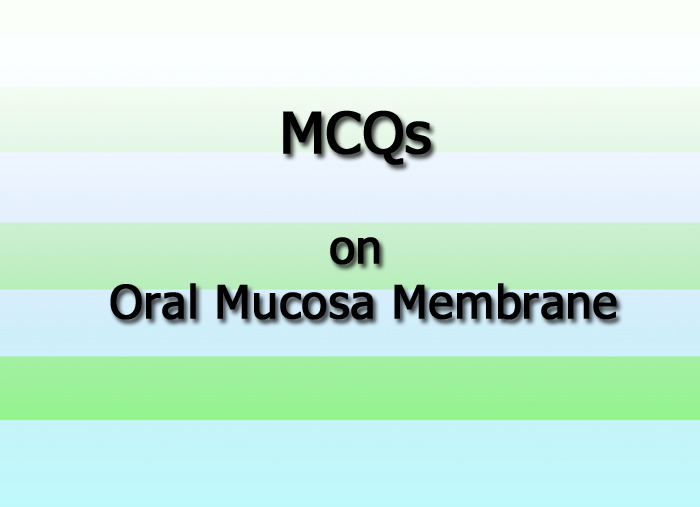- NEED HELP? CALL US NOW
- +919995411505
- [email protected]

1. Stratum granulosum is not present in
a) Hyper orthokeratosis
b) Hyper parakeratosis
c) Non keratinized epithelium
d) Sulcular epithelium
2. Non keratinized epithelium is found over
a) Attached gingiva
b) Free gingiva
c) Interdental papilla
d) Gingival sulcus
3. Elongated rete pegs are seen in
a) Alveolar mucos
b) Floor of the mouth
c) Attached gingiva
d) Buccal mucosa
4. keratohyaline granules are more evident in
a) Keratinised
b) Non keratinized
c) Para keratinized
d) Ortho keratinized
5. Supporting cells of taste buds are called as
a) Sustenticular cells
b) Taste cells
c) Von ebner cells
d) Acini
6. After the eruption of crown, the reduced enamel is known as
a) Primary attachment epithelium
b) Secondary attachment epithelium
c) Primary enamel cuticle
d) Reduced enamel epithelium
7. The high level clear cell present in the oral epithelium is
a) Melanocyte
b) Lymphocyte
c) Merkel cell
d) Langerhans cells
8. Masticatory mucosa is
a) Para keratinised
b) Otho keratinised
c) Non keratinised
d) Sub keratinised
9. Protein making up the bulk of keratohyaline granules in stratum granulosum of keratinized epithelium is
a) Involucrin
b) Vinculin
c) Filaggrin
d) Nectin
10. the intermediate filaments of epithelium are
a) Glial filaments
b) Desmin
c) Vimentin
d) Cytokeratin
Answers with explanation
1. C
2. D
Sulcular epithelium, junctional epithelium and interdental col are non-keratinised areas in gingiva. Sulcular epithelium lacks rete pegs.
3. C
The papillae of the gingiva are long, slender, numerous with few elastic fibres. The papillae of alveolar mucosa are short with many elastic fibres.
4. D
5. A
6. A
After the ameloblasts finish formation of the enamel matrix, the leave a thin membrane on the surface of the enamel called primary enamel cuticle. After this the epithelium enamel organs is reduced to a few layers of cells called reduced enamel epithelium; which cover the entire enamel. Once the tip of the crown has emerged, the reduced enamel epithelium is termed as primary attachment epithelium.
7. D
8. B
Epithelium of masticatory mucosa is frequently orthokeratinized, although quite normally there are parakeratinized areas of the gingiva and occasionally of the palate.
9. C
The protein making the bulk of kertohyaline granules is filagrin.also sulfur rich protein locrin is present.filagrin & loricin are useful markers of epithelial differentiation. Involucrin contributes to the cornified cell envelop in the cell membrane of keratohyalin cells.
10. D
Cytokeratins form cytoskeletion of all epithelial cells, along with microfilaments and microfibrils.




